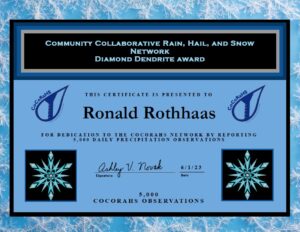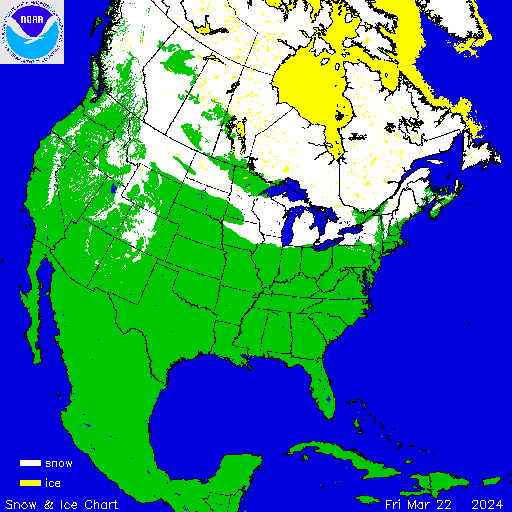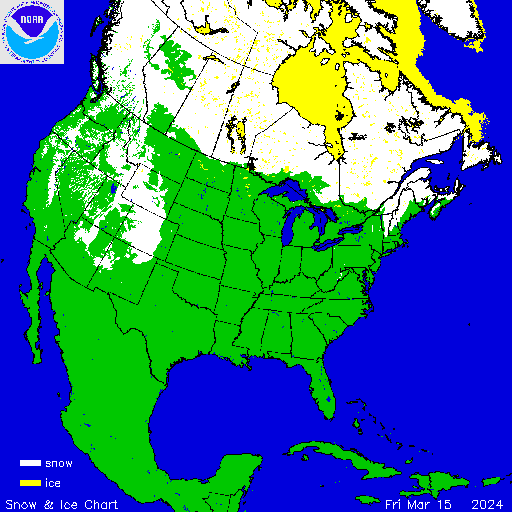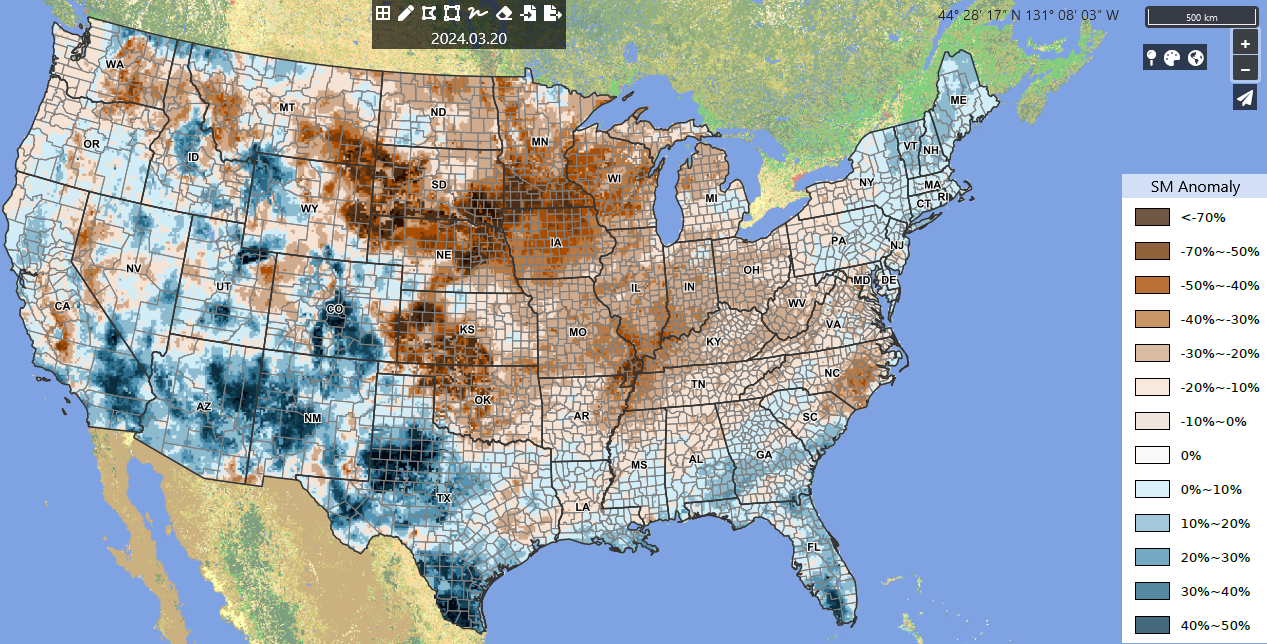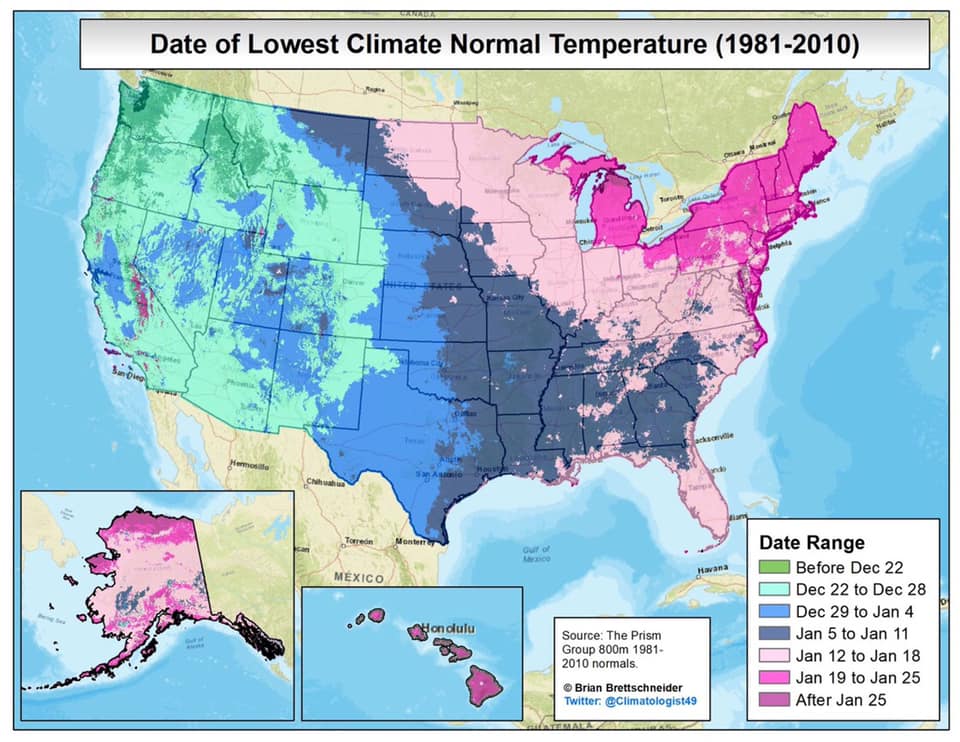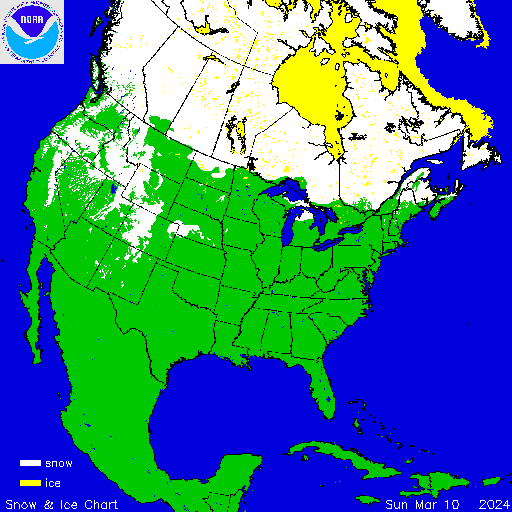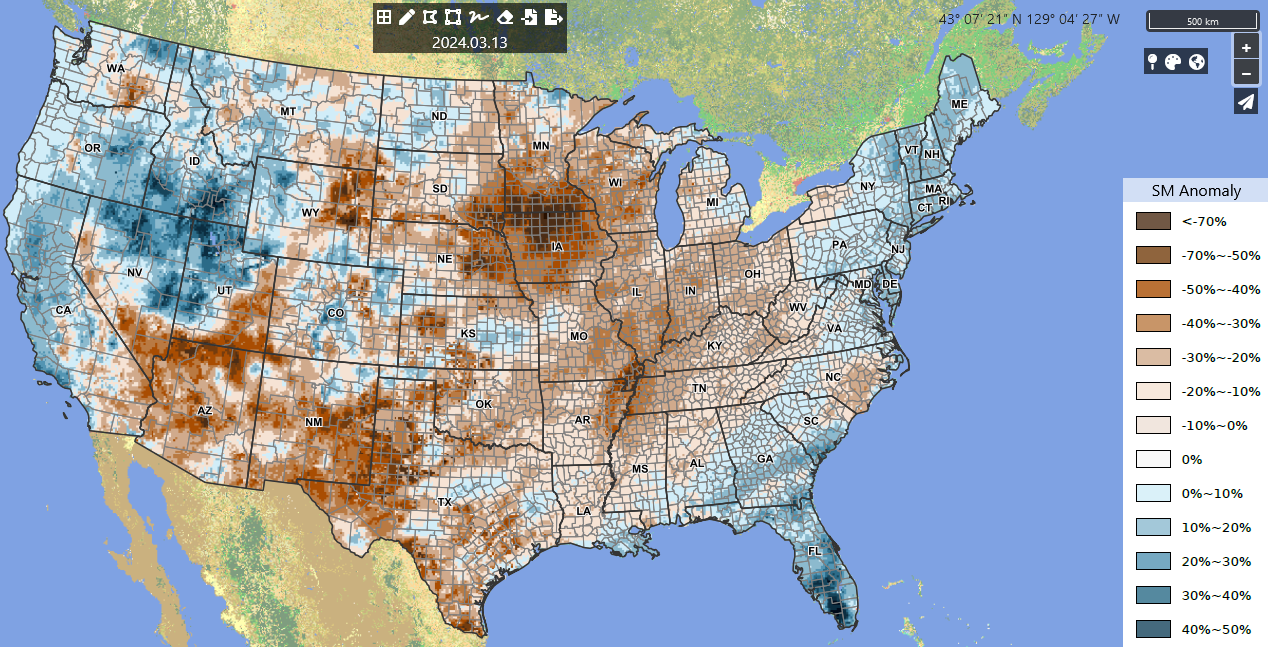
Welcome to meteorological spring!
We are almost 1/3 of the way through meteorological spring. Can you believe it?
Winter? What winter?

Once again we had an exceptionally warm winter. There were only really a handful of midwinter like cold periods, mainly in January. February was over 9° above normal which is exceptional. Because of this, we are seeing an extremely early spring with trees and plants budding out much earlier that would normally be expected. Recent cold weather over the past week or two has slowed the progression and allowed us to catch our breath.

Because of the exceptionally early spring we have had to move ahead on treatments that we would normally do a little bit later. This is based on a science called phenology which equates the advancement of the bloom times of plants with the emergence of insects and with temperature, measured in growing degree days. We keep careful track of this in order to manage our treatment programs and when we are doing our treatments. It may sometimes seem like our treatments are unequally spaced or sometimes very close together but this timing is based on the phenological progression of plants.
· Growing Degree Days and Phenology for Ohio
· Growing degree days and Phenology: Phenology Forecasts
· Growing degree days and Phenology: Timing Controls of Landscape Pests Using Flowering Plants as Indicators | PDF
Delay can mean defeat
I must caution you that delaying treatments because they seem too close together can actually cause us to miss appropriate treatment windows and have treatments become less effective, or not effective at all. It is also important to understand that fungicides prevent or suppress fungal infection which occurs during very specific weather conditions of temperature and moisture. We have found through experience that delaying treatments because there is a chance of rain can greatly decrease the effectiveness of our treatments. This is because the fungicide needs to be on the plant when the rain comes and the leaves are wet.
If we delay treatment because there is a chance of rain and then we get several days of rain and wet conditions before we are able to do the treatment, the wet conditions may very well have initiated fungal infection. Fungicides generally do not cure fungal infection so if the infection initiates during the wet weather, treatment will be considerably less effective when we finally do come out. Some of our treatment timing may seem illogical but there really is a logic and a science behind it.
Boxwood blues

A big topic at winter conferences has been all the problems with boxwoods. If you do not know what I am referring to consider yourself fortunate. There are multiple diseases such as Volutella canker, boxwood blight, and boxwood die back. There are also insects like the boxwood psyllid, the boxwood leaf miner, and the new but no less important box tree moth.
Despite this very long list of potential problems, state diagnostic labs have reported very few cases of boxwood blight and boxwood die back. Certainly they are seeing the boxwood psyllid and boxwood leaf miner but that is not what is causing the major problems with boxwoods. What they are seeing on virtually every boxwood sample is Volutella canker.
Volutella canker is a latent fungal infection which lays dormant on the stems of boxwoods. There is really no preventative treatment for it. It begins to manifest itself when the boxwood shrub becomes stressed, in this case by drought in the fall of 2022 followed by the historic temperature drop from warm to bitter cold in late December 2022. This combination of stress factors was enough to push a majority of our boxwoods over the edge with Volutella canker becoming rampant.
The canker disease can progress down the stems which means that it doesn’t always show up right away and even after you prune it out. If you don’t get all of it, it can continue to progress and show up over time. The best way to manage it is to cut infected stems deep into the plant and behind the cankered area.
In some cases it can be effective to actually pruned boxwoods back to stumps, a kind of rejuvenation pruning, but if you are going to do that it really needs to be done now. Horticulturists at spring Grove cemetery and Arboretum have reported that they have cut 95% of their boxwoods back to stumps. If history has taught us anything it is that we would expect these boxwoods to fully recover.
I know they are pretty, but…

The Callery pear was once the darling of the landscape industry. First introduced under the names Bradford and Aristocrat, the pear trees were self sterile meaning they did not produce any type of seed or fruit. However, the Bradford pear in particular was extremely weak wooded and prone to structural failure. This became a huge problem very quickly as Bradford pears were planted all over.
Because of all the problems the nursery industry worked to introduce other cultivars such as Cleveland Select, Capitol, Red Spire and many others. These new introductions were actually able to pollinate the Bradford and Aristocrat pears as well as other Callery pears. What started out as a sterile tree became prolifically fruit and seed producing.
As it turns out, one tree can produce 1,000,000 seeds. Birds ingest the fruit and poop it out all over the landscape and all of a sudden we have one of the worst invasive species that we have seen in a long time, right up there with the Amur honeysuckle and kudzu. The Callery pear was brought here from China. It is not native and it is a bully, crowding out native trees, shrubs, and herbaceous plants.
The Callery pears are extremely damaging to the ecology to the extent that the Ohio Department of Agriculture has added it to its banned plants list and it is now illegal to either plant Callery pears or transplant them in the state of Ohio. Yes, they are beautiful but you can’t judge a book by its cover or a tree by its beautiful flowers.
Looks can be deceiving.
Lesser Celandine Tests the “Ephemeral” Concept

Lesser Celandine (Ficaria verna (previously Ranunculus ficaria)) belongs to the buttercup family, Ranunculaceae, and is sometimes called “fig buttercup.” The “buttercup” describes the bright yellow flowers, and the “fig” refers to the shape of the underground tubers.
Now is a Fine Time to Scout for Poison Hemlock

Poison hemlock overwintering rosettes are already coming back to life. Now is an easy time to look for established poison hemlock plants because they are going to be greener than most any other plants that are not growing.
A busy conference season

Caitlyn Pollihan, CEO and Executive Director of the International Society of Arboriculture, addresses the Landscape Below Ground Symposium in October.
In October I was privileged to be able to attend the Landscape Below Ground Symposium at the Morton Arboretum in Lisle, IL. That symposium brought together researchers from around the world, including speakers from 9 countries, addressing the latest research in the below ground portions of trees and landscapes. The Morton Arboretum, by the way, is an amazing facility worthy of a visit by anyone interested in horticulture.

Ron Rothhaas with a State Street maple, dating to 1932, at the Morton Arboretum.
In November I attended OGIA’s Midwest Green conference in Columbus. In December I attended the Taking Root Professional Seminar in Cincinnati and the ISA Virtual Conference. In January I attended the Indiana Arborist’s Conference which included a 4-hour presentation by Dr. Christopher Lully, author of Wood Decay Fungi Common To Urban Living Trees in the Northeast and Central United States. The next day I visited northern Kentucky for the all day workshop, Tree Decay Process: The Science of Fungal Cankers and Wood Rots. Exciting stuff! Hey, I’m a geek!
February kicked off on the first with the Tri-state Green Industry Expo in Sharonville, Ohio, attended by over 900 members of our green industry. The very next week was the Ohio Tree Care Conference in Newark, Ohio, attended by over 500 people.

The dawn redwood planting at Dawes Arboretum.
While in Newark, I took a day after the conference to tour the Dawes Arboretum, a magnificent horticultural gem. I was both surprised and thrilled to find an orchard of 344 dawn redwood (Metasequoia glyptostroboides) trees at Dawes Arboretum which were germinated from seed collected in a 1970 expedition sent into China by Dawes, the State University of New Jersey, and Rutgers University, where they collected seed from 50 individual trees in order to expand genetic diversity in cultivation as well as provide for cross pollination.

I attended the Kentucky Arborist’s Conference in late February and the Public Workers Tree Seminar in Burlington, KY, in early March. I will also be attending the Sustainable Urban Landscape Symposium at the Cincinnati Zoo and Botanical Garden on March 14.
Yes, it has been a busy winter, but spring is here and it’s time to get moving!
A chance meeting with a horticultural legend…

Michael A. Dirr with Ron Rothhaas in Smale Riverfront Park, downtown Cincinnati.
On the Saturday afternoon after the Ohio Tree Care Conference I took my two younger adopted children, ages 9 and 10, down to Smale Riverfront Park on the downtown Cincinnati riverfront to play in the playground next to the Suspension Bridge. My 9-year-old daughter gave me her Minnie Mouse doll to hold while she played in the playground, so there I sat on a park bench in downtown Cincinnati with a Minnie Mouse doll.
A man came walking up the walkway wearing shorts, a T-shirt, and a University of Georgia hat. I commented on how it was warm enough in February to wear shorts and a T-shirt and he responded that in Athens GA where he lives, he can dress that way much of the year.
We talked for a time about how he once lived in Cincinnati and still had family in Cincinnati and the longer we talked the more I thought I recognized him. I finally looked at him and asked, “is your name Michael Dirr?” He looked at me suspiciously for a minute with my Minnie Mouse doll and finally replied that he was and I told him that I’m an arborist and horticulturist and had used his texts in college and throughout my career. I probably sounded a bit like a giddy teenager.
My children came running up to me, explaining to Mr. Dirr the presence of the Minnie Mouse doll, and he relaxed and we proceeded to have an amazing 30 minute conversation about trees and my opinion on various cultivars. It was an amazing experience and surprise and one I will treasure for some time. In trying to explain my excitement to my children I told them this, “how would you feel if Taylor Swift came walking through the playground?” I think they understood.
Some thoughts from Ron…
As I write this my mother, who has been ailing and declining for some time, has been placed in Hospice. Nobody really has any firm idea how long she has but it doesn’t seem like it will be very long.
I have watched my mother decline over a number of years. I cleaned out her independent living patio home at Twin Towers last summer and only eight months later cleaned out her assisted living apartment after she was moved into nursing care. We had been hoping that the move to assisted living would allow her to become more active with the activities in the main building and closer to her friends but it didn’t work out that way. It’s sad but she didn’t really seem interested any more in life and that is her choice.
I’m not writing this to beg for sympathy. As a Christian I’m well aware that there is a time for every purpose under heaven including a time to live and a time to die. For all of us there is a time to live and a time to die. From my perspective it is critical that my time here on earth is a time that I can do my best to love God and love my neighbor, what Jesus said were the two most important commandments.
I am human and I likely fail at that every day. That and the fact that I am far from perfect is why Jesus had to die on the cross for my sins, and those of all mankind. I am forever grateful and thankful that God loves me so much that he would die for me and that I can be given a life where I can live out my life for him and for those around me including my friends, my family, and you, my clients.
I’m also very blessed that I’m able to spend a good part of my life in a profession that I love and have a great passion for. I love trees, I love horticulture, I love this natural world that who bears the fingerprints of God, and I am blessed that I can play a small part in its stewardship.
I will turn 60 years old later this year and many people my age are beginning to think about retirement. On the other hand, I know many consulting arborists who are still following their passion well into their 70s. I really have no interest in walking away from a profession that I love. My retirement plan, if you wish to call it that, is to continue to follow my passion as long as my mind and my body will allow it. Translation, Lord willing, I’m not planning on going anywhere anytime soon.
As Arbor Doctor has grown over these past 20 years it has become increasingly difficult for me to visit every property and visit with every client. That is why I surround myself with a team of very competent individuals. I do my best to make my rounds and as always feel free to contact our office if there’s something you would like me to look at or give my attention to but be assured that my staff is quite competent and quite able to attend to your plant health care needs.
If you have any questions or inquiries, you may submit a request in our customer portal or contact Director of Operations Camille Rechel at 513-661-2673 or camille@arbordoctor.com.





